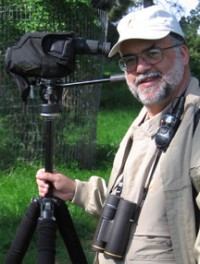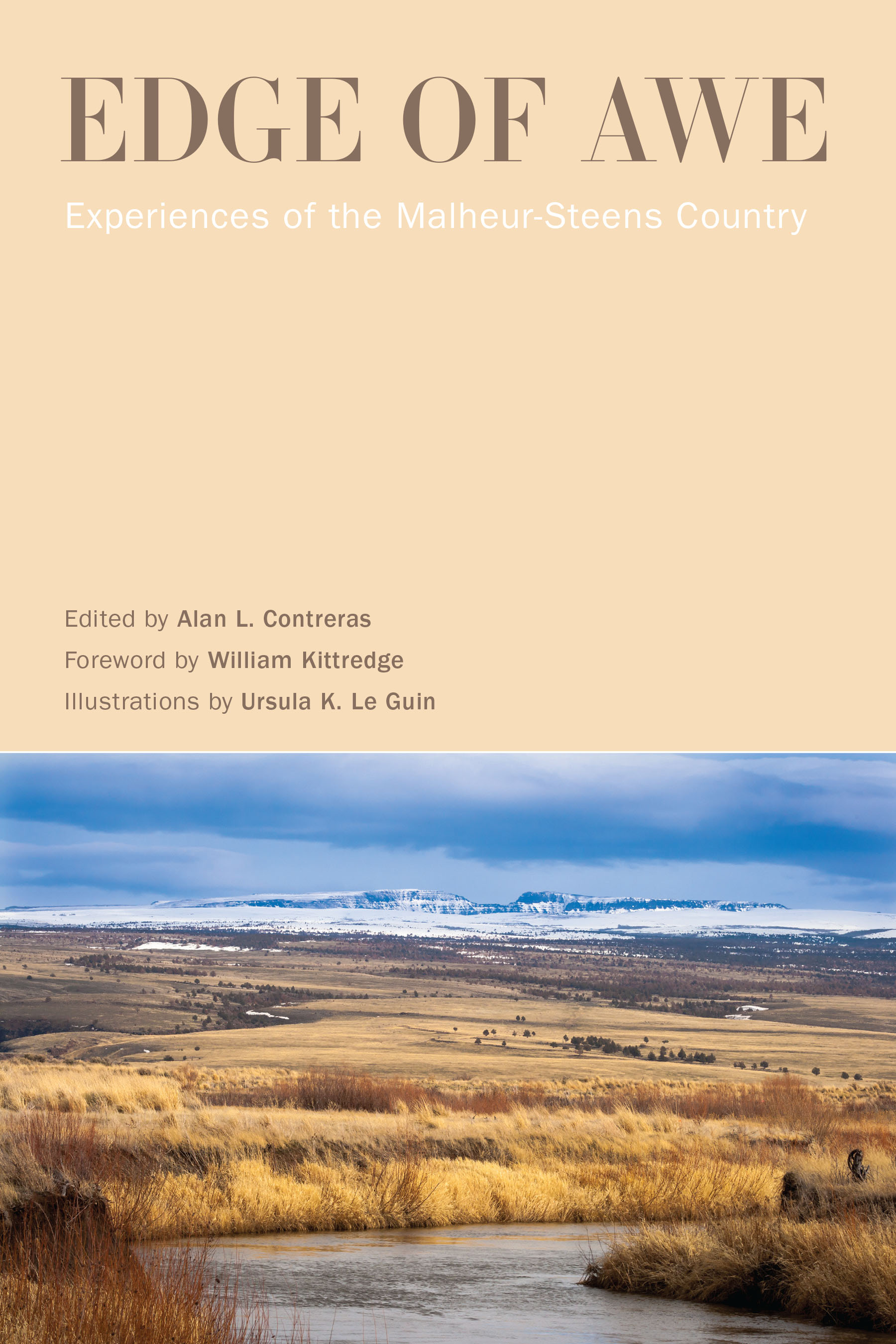
It's May, and we are welcoming springtime flowers and a brand new book here at the OSU Press office! Edge of Awe: Experiences of the Malheur-Steens Country is fresh off the press. This anthology explores the perspectives and experiences of visitors to this beautiful region in eastern Oregon with a special focus on birds and featuring illustrations and poetry by Ursula K. Le Guin. Today on the blog, editor Alan Contreras speaks with OSU Press Griffis Publishing Interns Carolyn Supinka and Zoë Ruiz.
What inspired you to put together this anthology on the Malheur-Steens region? How did you select the contributors for the anthology?
There have been other books on the region that focus on the birds, a family’s history, the 2016 infestation of the Malheur National Wildlife Refuge Headquarters, and the general cultural history. There has not been a book that focuses on the experiences of visitors to the region, which seemed to me worth doing.
Most of the older material that I included was fairly obvious. Dallas Lore Sharp’s classic chapter from Where Rolls the Oregon and Charles E. Bendire’s bird reports are examples. I knew contributor Dave Marshall from our work on Birds of Oregon published by OSU Press in 2003,and I knew contributor Tom McAllister in part through his writing and in part through Dave. Both Tom and Dave came to Malheur as kids early in the 20th Century, and they also visited as adults.
The harder part was choosing the essayists for the closing segment. In most cases these were people I knew whose experiences at Malheur were distinctive and different. There could have been hundreds of these, of course, and I intentionally chose a variety in terms of both age and experience.
How did you first come to visit the region? Can you describe your experience?
This is my 49th year visiting the Malheur-Steens region; I first went when I was 14. Anyone who has come here knows what their first visit in spring is like. There are birds everywhere and many of them are unique and spectacular: cranes, avocets, yellow-headed blackbirds, and phalaropes.
 Malheur-Steens region has impacted a lot of writers, scientists, and individuals. Why do you think this is? What are some things about the region that draw people in?
Malheur-Steens region has impacted a lot of writers, scientists, and individuals. Why do you think this is? What are some things about the region that draw people in?
The combined impact of the biological diversity and the large scale of the landscape is hard to match. There are places with one or the other but not both. Also, the spring and fall experience is very different owing to the seasonal change in hydrology and access to Steens Mountain in fall.
You’re currently volunteering at the Malheur Refuge Headquarters. What’s a typical day in the life of a volunteer?
There are two kinds of volunteers, those who work for the refuge and those who work for the nature store. In practice we help each other out, but there are several different functions. I signed up to be the front desk docent because I am too old and fat to do trail maintenance or move objects around the refuge. Also, I know the birds and the locations really well so most of the tourist questions are easy to answer.
My day begins with opening the front desk at HQ, dealing with security steps, making sure that the feeders and brochure racks are full and seeing if there are any special news items for the day such as road closures. After that it is mostly answering tourist questions.. I have some free time during which I keep a running count of birds I see and hear from the deck. As I write this at the end of April, I am finding a bit over fifty species a day, which is good for an area sixty feet wide.
What do you hope people who may have never visited the region take away from Edge of Awe?
A desire to have their own unique experiences in this beautiful and distinctive part of Oregon.
***
To purchase Edge of Awe, click the link. All royalties from the book go to Friends of Malheur, which supports user access such as trails, signage, The Nature Store, and more.
Alan L. Contreras fourth-generation Oregonian who has been visiting the Malheur-Steens region for five decades. A graduate of the University of Oregon and its law school, he is retired from work in higher education. He is the author of several books published by Oregon State University Press, including Afield and Birds of Oregon, and has also published three poetry collections, a book on state regulation of colleges, and others. He lives in Eugene.
